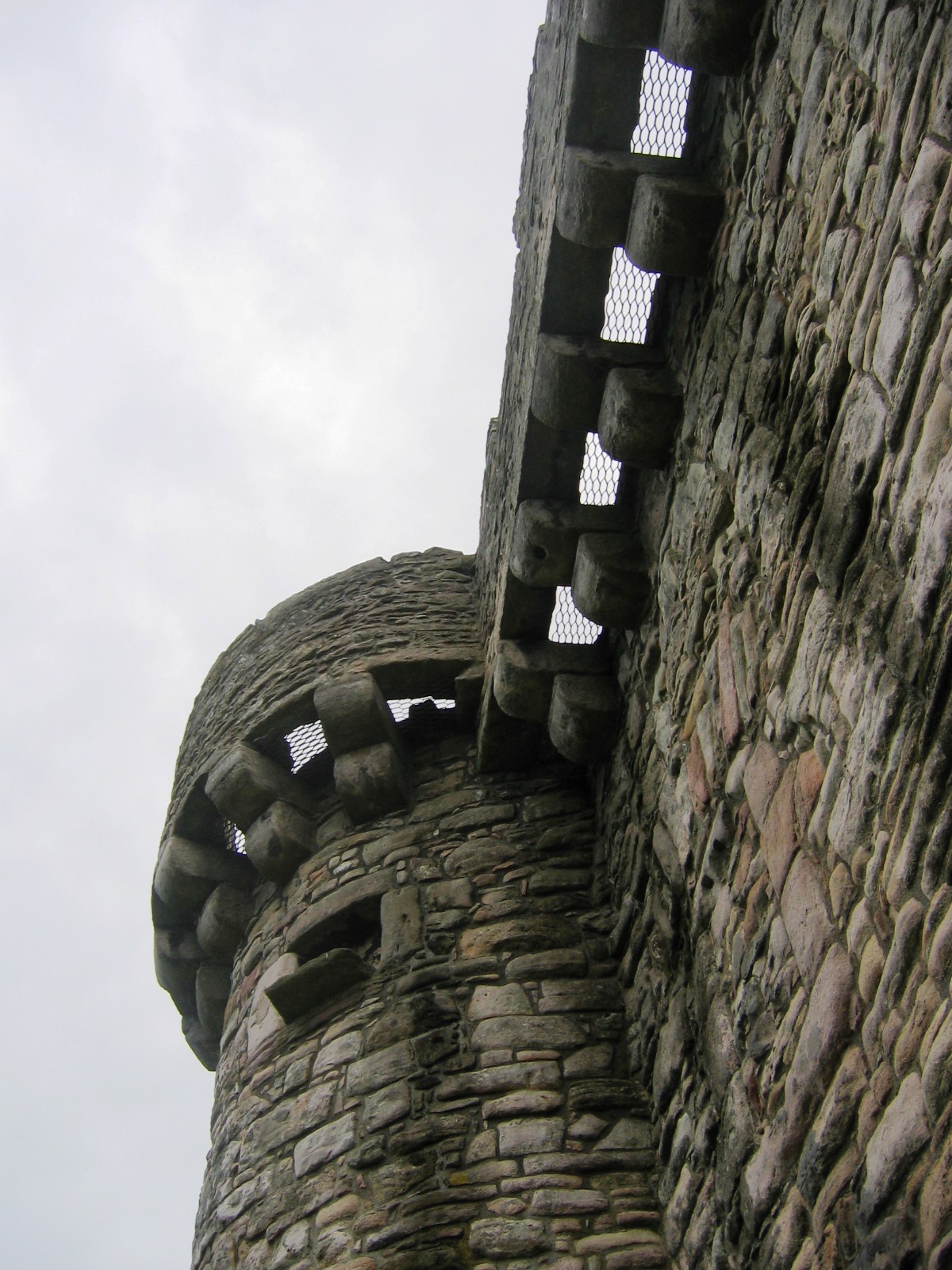Machicolation on:
[Wikipedia]
[Google]
[Amazon]
In
 The oldest known buildings with machicolation are
The oldest known buildings with machicolation are
Machicolation - Dictionary of French architecture from the 11th to the 16th century
{{Fortifications Castle architecture
architecture
Architecture is the art and technique of designing and building, as distinguished from the skills associated with construction. It is both the process and the product of sketching, conceiving, planning, designing, and construction, constructi ...
, a machicolation () is an opening between the supporting corbels of a battlement through which defenders could target attackers who had reached the base of the defensive wall. A smaller related structure that only protects key points of a fortification are referred to as Bretèche. Machicolation, hoarding
Hoarding is the act of engaging in excessive acquisition of items that are not needed or for which no space is available.
Civil unrest or the threat of natural disasters may lead people to hoard foodstuffs, water, gasoline, and other essentials ...
, bretèche, and murder holes are all similar defensive features serving the same purpose, that is to enable defenders atop a defensive structure to target attackers below. The primary benefit of the design allowed defenders to remain behind cover rather than being exposed when leaning over the parapet. They were common in defensive fortifications until the widespread adoption of gunpowder weapons made them obsolete.
Etymology
The word machicolation derives fromOld French
Old French (, , ; ) was the language spoken in most of the northern half of France approximately between the late 8th -4; we might wonder whether there's a point at which it's appropriate to talk of the beginnings of French, that is, when it wa ...
, mentioned in Medieval Latin as ', probably from Old French 'crush', 'wound' and 'neck'. The verb ''Machicolate'' is first recorded in English in the 18th century, but ''machicollāre'' is attested in Anglo-Latin.
Origins and Regional Prevalence
 The oldest known buildings with machicolation are
The oldest known buildings with machicolation are Ancient Roman
In modern historiography, ancient Rome is the Roman people, Roman civilisation from the founding of Rome, founding of the Italian city of Rome in the 8th century BC to the Fall of the Western Roman Empire, collapse of the Western Roman Em ...
fortifications of the Limes Arabicus dating from the 4th century AD. The design was brought to Europe from the Levant following the crusades
The Crusades were a series of religious wars initiated, supported, and at times directed by the Papacy during the Middle Ages. The most prominent of these were the campaigns to the Holy Land aimed at reclaiming Jerusalem and its surrounding t ...
and became especially prevalent in Southern Europe.
Machicolations were more common in French castles than English, where they are usually restricted to the gateway, as in the 13th-century Conwy Castle. Within France, machicolation is more common on southern castles. One of the oldest extant examples of machicolation in northern France is at Château de Farcheville which was built from 1290 to 1304.
See also
* Arrow slit * Defensive walls *Garderobe
Garderobe is a historic term for a room in a medieval castle. The ''Oxford English Dictionary'' gives as its first meaning a store-room for valuables, but also acknowledges "by extension, a private room, a bed-chamber; also a privy".
The word der ...
* Jettying
* Murder hole
*Parapet
A parapet is a barrier that is an upward extension of a wall at the edge of a roof, terrace, balcony, walkway or other structure. The word comes ultimately from the Italian ''parapetto'' (''parare'' 'to cover/defend' and ''petto'' 'chest/brea ...
References
External links
Machicolation - Dictionary of French architecture from the 11th to the 16th century
{{Fortifications Castle architecture